When faced with the question of how to conduct an interview for research, does the process seem daunting to you?
If it does, you are not alone. Not only do newbies have to deal with new theory, but also new methods of inquiry and data collection.
Do not fret, this complete guide will give you easy, step-by-step instructions on how to get it all done like an expert.
So, let’s get started.
Why is Conducting Research Interviews Important?

Qualitative research interviews are a crucial data collection tool for a wide variety of methods used within education research.
They help researchers with opportunities to explore, in great detail, unique experiences of the participants, allowing in-depth insights into how their different interests are experienced and perceived.
For many newbies the learning curve can be difficult, especially if their university hasn’t provided them with an easy-to-follow guide on how to conduct an interview for research.
With this article though, we aim to make things easier for you.
How to Prepare for a Research Interview
Understand the Different Types of Research Interviews
- One-on-one Interview with an Individual
- Interview with 2-3 Participants
- Focus Group Research Interviews
With COVID-19 dominating the better part of 2020, at the time of writing of this article, it’s no surprise that most of these interviews are now done over the phone or by using VoIP services like Zoom, Skype etc.
Interview Types for Qualitative Research
Unstructured Interviews: No questions are prepared beforehand. The interview often progresses like a normal conversation around the research topic.
Semi-Structured Interviews: An interview guide is prepared beforehand. However, the interviewer does not strictly follow a list of formal questions. Instead, more open-ended questions are asked, allowing for a discussion with the participant rather than the traditional question and answer format.
Structured Interviews: As the name suggests, these interviews strictly adhere to a formal list of questions. It’s probably the least flexible out of the three.
Semi-structured interview format has been the most commonly used and successful lately.
When it comes to formatting, verbatim transcription is also a commonly used technique.
Challenges with Conducting a Research Interview
There are very few, or no guidelines at all for conducting qualitative research interviews.
Authors of the book “InterViews; Learning the Craft of Qualitative Research Interviewing”, Svend Brinkmann and Steinar Kvale from prominent universities in Denmark, argue that one of the challenges of conducting interviews is that they are carried out under the naïve assumption that the researcher wants to achieve understanding through dialog and discussion.
They also suggest that interviews should not be conceived as informal chats with interviewees; instead they are data-collection instruments which can be used to penetrate a number of research questions.
That could be analyzed as six of one, half a dozen of the other.
The steps recommended in this complete guide on how to conduct a research interview has evolved out of working with research students from prominent universities from around the world for the last 15 years.
Furthermore, which is supplemented with our own extensive research on literature surrounding qualitative research methods.
What to do before Conducting a Research Interview?
Prepare a Research Interview Guide

The easiest answer to the question of ‘how to conduct an interview for research’ is ‘prepare an interview guide’.
Imagine going into an interview with nothing prepared, whether you’re the interviewer or the interviewee.
As an interviewer, it is always helpful to have an interview guide ready, so that you have precise questions pre-planned, and you don’t run out of things to ask during the interview.
An interview guide makes you look professional, and when preparing one, the following tips may help:
10 Tips for Preparing a Research Interview Guide
- Introduce yourself to the participant and explain the aim of the interview.
- Make sure the participant is fully aware of the purpose of the research.
- Be creative with your questions, so they easily help to answer your research question.
- Make sure the questions are relevant and to the point.
- Make sure you’re impartial. Don’t try and lead the participant. People should be free to give their own, honest answers.
- Group and sequence your questions by topics/themes and follow a logical sequence.
- Try and make the interview less confusing for the participant.
- Having said that, you should be able to easily move back and forth between questions or topic areas.
- Your questions should be extremely clear and easy to understand.
- Avoid technical or academic language or industry jargons if you’re unsure your interviewee will understand what you mean.
What Kinds of Questions Should You Ask in a Research Interview?
- Introducing Questions; for example, “Why did you…?” or “Can you tell me about…?” These questions help introduce the topic.
- Follow-Up Questions; for example, “What did you mean…?” or “Can you give more detail…?” These help elaborate on their initial answer.
- Probing Questions; for example, “Do you have any examples?” or “Could you say more about…?” Probing, direct questions help extract more detail.
- Specifying Questions; for example, “What happened when you said that?” or “What did he say next?”
- Direct Questions; Questions with a yes or no answer are direct questions. You might want to leave these questions until the end so you don’t lead the interviewee to answer a certain way.
- Indirect Questions; You can ask these to get the interviewee’s true opinion.
- Structuring Questions; These move the interview on to the next subject. For example, ‘Moving on to…’
- Silence: Through pauses you can suggest to the interviewee that you want them to answer the question!
- Interpreting Questions: ‘Do you mean that…?’ or ‘Is it correct that…?’
How to Get the Best Sound Quality Possible for a Research Interview
For complete and definitive step-by-step guides, the following articles may help:
- Interview Transcription Definitive Guide
- How to Conduct an Interview for Research From Home in 2020
- How to Record Audio for Best Sound Quality
- 5 Ways to Record Better Focus Group Interviews
Academic transcription services can turn your research interview audio files into highly accurate transcripts which will make qualitative and mixed methods research with software like Dedoose a breeze.
However, qualitative research software has its own limitations. If your research interview transcript isn’t accurate, or not properly formatted, you may not get the best results.
Why Should You Care about Sound Quality of a Research Interview?
If you’ve conducted all your research interviews in a busy restaurant, chances are it will have an impact on the accuracy and overall outcome of your research.
Why is that important? Because no matter how quick you are at taking notes while the participant talks, you are always likely to miss out on key details. Only a full transcript gives you the best shot at accurately capturing and mining important data.
Better sound quality of your research interviews will result in higher accuracy of your transcripts, which may affect the outcome of your research.
Bad audio quality also means you pay more for transcription services or spend more time transcribing or proofreading transcripts yourselves.
Below are some Quick Tips to Record Research Interviews:
1. Interview Environment

That not only looks cozy and like a haven for introverts, but it’s also the perfect setting to record an interview for qualitative research.
A lot of clients forget that recording their research interviews at a busy restaurant, coffee shop, airport, Iron Maiden concert etc. can affect the overall outcome of their research study.
Important details from the interview get lost in background noise and the click-clack of a restaurant.
On top of that, you may even be wasting time, because you may have to re-record the interview because the speakers were barely audible in your initial recording.
So, measure twice, cut once and choose a quiet environment when conducting research interviews.
2. Interview equipment
Lots of free sound recording apps are available for whichever smartphone ecosystem you’re on, whether it’s iOS, Android or Windows. Just search for a “sound recorder” app on your smartphone or tablet’s App/Play store.
While smartphone apps are becoming better, and are an excellent choice to record your research interviews, if you’re going to be recording more often, it’s probably a good idea to invest in a digital recorder, something that looks like this:
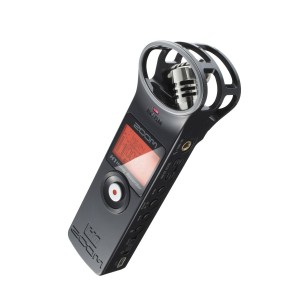
There’s a highly sensitive external microphone at the top of these that help pick up voices more precisely than an internal, tightly packaged smartphone microphone can. Plus they come with good storage, record into MP3, and are all around great value for money.
These are normally used by professionals like journalists/reporters. So, if you’re going to be doing this often, it’s maybe worth a look.
3. Interview Participant

With or without COVID-19 researchers conduct a lot of phone or online interviews.
If you are however figuring out how to conduct an interview for research in person, please make sure you take all the preventative measures for COVID-19, which would probably involve wearing masks. In which case, it’s a good idea to keep the microphone as close to the participant as possible.
If you’re recording a phone interview, keep the recorder as close to the phone speaker as possible. Skype and Zoom have in-built tools to record calls which should get you the best quality barring any huge background noise.
You can make your life easier (and the transcriber’s) by asking participants to speak in a clear, intelligible manner and enunciate better.
Sometimes you can have the perfect circumstances for an interview, no background noise, quiet room etc. but if the speaker talks under their breath, away from the microphone, mumbling or speaking too fast or with a difficult to comprehend slang, it’s up to you to take control of the interview.
Transcribing the Research Interview
Transcribing the spoken word to written form can take a long time. It is important to factor this in when planning your project and be realistic about how many interviews you will be able to process.
Ideally you will be, both, recording your interviews with an up to date digital recorder, and taking notes at the same time. A digital recorder or a smartphone recording app will enable you to save a file onto your device of choice, so that you can slow it down to a pace you are able to keep up with on your keyboard.
Careful choice of quiet venue for your interviews will pay off at this point with the time you save by having a great quality recording to work from.
As you complete your first interview, listen to it and reflect on the process so that you can make improvements as you go.
If you need help with transcribing your research interviews, maybe we can help.
Analysing your Research Interview Transcripts

You will most probably have a lot of data by the time you have finished your interviews.
Hopefully, before you planned your project and figured out how to conduct an interview for research, you will have had some ideas about what kinds of information you want to pull out and examine and which topics you will cover.
Not everything in the interview needs to be analyzed.
Depending on the nature of your subject, you may want to present your findings as statistical information in graphical form.
Of the relevant information, you could pick out key points and quotes to illustrate your points. You can code by allocating certain passages numbers to identify key aspects allowing you to easily find what you want and pull things together.
You may be analysing the reading habits of school children for example and want to locate where they speak about what they read with their parents, or at school or alone.
There are also research tool programs available such as Nvivo, which helps you to classify your data using codes.
As usual, a lot of effort and research goes into producing these helpful articles for you. So, if we were able to help you in any way, please leave a comment below and share it with your friends or colleagues who may find it helpful.
We provide high quality research transcription services. So, if we can help you, please let us know.
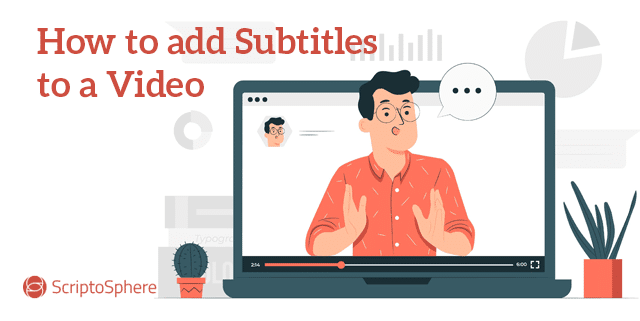
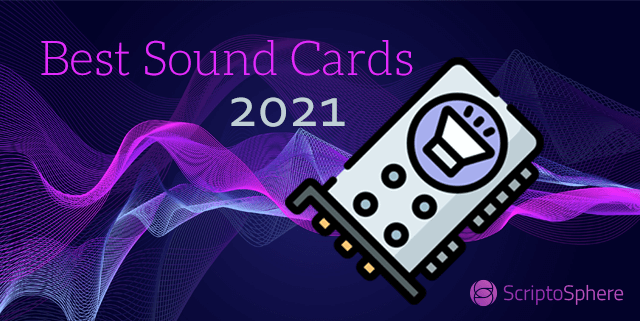
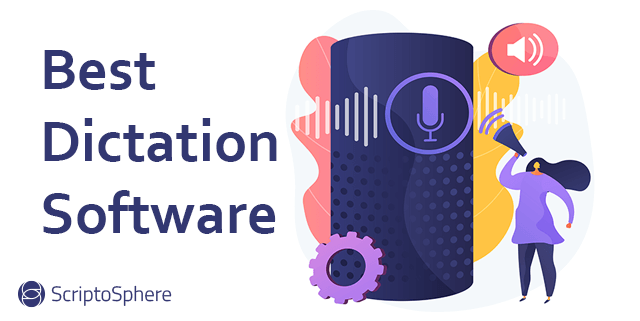
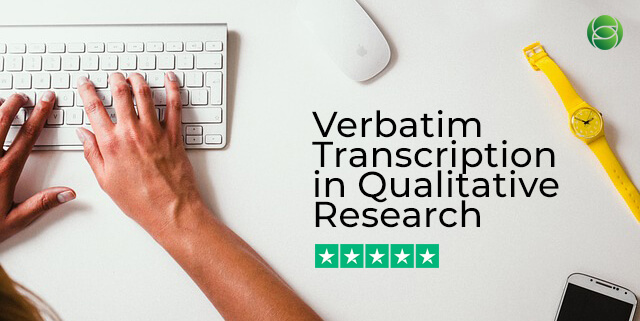
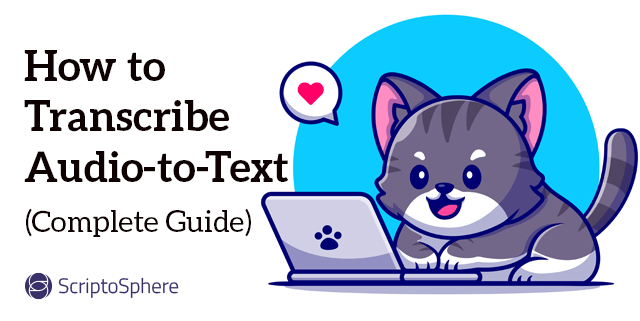
Leave A Comment